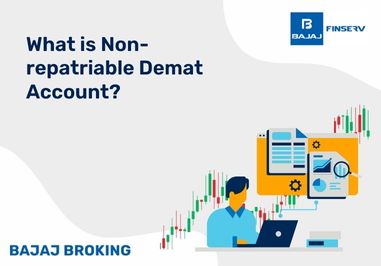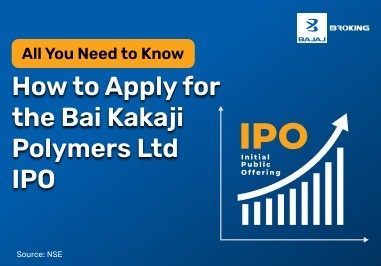As a trader, it’s important to keep an eye on major stock indices. Their performance often gives you a hint about where the broader market is headed. Watching how these indices move can help you understand the overall market trend.
In India, one of the key indices to follow is the Bank Nifty, also known as Nifty Bank. This index tracks the performance of leading banks listed on the National Stock Exchange (NSE), focusing on the biggest and most actively traded ones.
Bank Nifty is considered a strong indicator of the Indian banking sector’s performance. It helps traders and investors gauge how the sector is doing and where it might be headed.
If you're curious about how Bank Nifty works and why it matters, you're in the right place. In this blog, we’ll break down what Bank Nifty is and how its movement can influence the wider stock market. Before we get into how to track Bank Nifty’s movement, it’s essential to first understand what Bank Nifty is, and to have a demat account in place if you plan to trade.
What is Bank Nifty?
Bank Nifty is a stock market index that reflects the performance of India’s banking sector. Introduced in 2003, it is managed by India Index Services and Products (IISL). It acts as a benchmark for the banking industry and offers investors a way to invest in the sector as a whole. Bank Nifty includes 12 major banks that are known for high liquidity and large market capitalisation on the NSE.
Company’s Name
| Weight (%)
|
HDFC Bank Ltd.
| 27.82
|
ICICI Bank Ltd.
| 25.18
|
Axis Bank Ltd.
| 8.40
|
State Bank of India
| 8.29
|
Kotak Mahindra Bank Ltd.
| 7.54
|
IndusInd Bank Ltd.
| 4.01
|
Federal Bank Ltd.
| 3.69
|
Bank of Baroda
| 3.44
|
IDFC First Bank Ltd.
| 3.14
|
AU Small Finance Bank Ltd.
| 2.90
|
Source: NIFTY
Core Market Drivers
The movement of Bank Nifty depends on a mix of fundamental and technical factors. Let’s break them down in a simple way:
Fundamental Factors
1. Bond Yield Movement: When a country’s economic indicators like inflation (CPI), GDP, trade balance, or fiscal deficit worsen, bond prices fall and yields go up. This rise in bond yields can reduce income from the bank’s treasury operations, which in turn may impact their stock performance.
2. Quarterly Results of Top Banks: Every quarter, updates from major banks such as HDFC Bank, ICICI Bank, Kotak Bank, SBI, Axis Bank, and IndusInd Bank are key. Focus on:
Net Interest Income (NII)
Core operating income
Net Interest Margin (NIM)
Asset quality
Capital adequacy ratio
CASA ratio
These help gauge the overall health of the banking sector and hint at market direction.
3. Sentiment Analysis: Market sentiment plays a big role in Bank Nifty’s movement. By tracking financial news, social media, and trader behaviour, we can understand whether the mood is bullish or bearish.
Look closely at options chain data:
High call option OI at a strike level often means the price is expected to stay below that level.
Put-Call Ratio (PCR) shows overall sentiment — a high PCR suggests more puts are being sold, hinting at a positive outlook.
If both Bank Nifty futures price and OI rise together, it signals bullish sentiment.
4. Use of Machine Learning & AI: Advanced traders now use machine learning and AI to analyze Bank Nifty.
First, data is collected: historical prices, economic stats, and news sentiment.
Algorithms are then built using tools like decision trees, random forests, or neural networks to detect patterns.
These models are tested with past data (backtesting) to see how they perform.
Regular tuning and updates are essential to stay effective in changing markets.
Technical Factors
Here are the key technical indicators used to track Bank Nifty:
in Call and Put Options for both the index and major banks like HDFC Bank, ICICI Bank, Kotak Bank, SBI, and Axis Bank. High OI can show key support or resistance zones.
Weekly or monthly analysis helps spot trends like:
Long build-up (buying with confidence)
Short build-up (expecting decline)
Short covering (traders exiting bearish bets)
Studying changes in option prices and implied volatility (IV) helps identify momentum and potential reversals.
Shows whether futures are trading at a premium or discount. A high premium usually means a range-bound market is expected.
IV Percentile:
Put-Call Ratio (PCR):
A rising PCR often points to bullish sentiment, while a falling one suggests bearishness.
A key price level used by traders, analysed over weekly, monthly, and quarterly periods.
Helps assess whether banking stocks are outperforming or underperforming the broader market.
EMAs at 10, 20, 50, 100, and 200 levels help in spotting short- and long-term trends.
Used by some traders to estimate possible trend reversal dates.
Useful mainly for understanding long-term positional trends.
Applied to calculate key resistance levels (+1, +2, +3 levels) weekly or monthly.
Tracking HV helps understand how much the index has been fluctuating over a period.
Key Observations
Relying only on technical charts and price trends doesn’t give the full picture when analysing Bank Nifty. To understand its movement better, you should also look at some key fundamental factors, such as:
1. Economic Conditions:
Indicators like GDP growth, inflation rates, and interest rate changes have a strong impact on banking stocks. A slowdown or policy change can significantly move Bank Nifty.
2. Bank Financial Results:
Reviewing quarterly financial reports of major banks helps you assess the sector’s overall performance. Metrics like profits, asset quality, and loan growth offer valuable insights.
3. RBI Policy Updates:
The Reserve Bank of India’s decisions on interest rates, liquidity, and regulations directly affect the banking sector. Monitoring these announcements is crucial for understanding possible Bank Nifty trends.
4. Price Charts
Another useful method to track Bank Nifty movement is by analysing its price charts. Here’s how:
Broader Market Trends:
Identifying the overall trend is key. If the chart shows higher highs and higher lows, it indicates a bullish trend. On the other hand, lower highs and lower lows suggest a bearish trend.
Support and Resistance Levels:
Marking key support and resistance levels helps in planning your trades. These levels act as decision points, support indicates a potential buying zone, while resistance can signal a possible exit or shorting opportunity.
Conclusion
To sum up, judging Bank Nifty’s movement isn’t just about reading charts or tracking news, it’s about combining both technical and fundamental insights. Watching price patterns, support and resistance, along with staying updated on economic data, RBI policies, and bank results, gives a clearer view of where the index might head.
By combining these fundamental insights and technical tools, traders can get a clearer view of where Bank Nifty might be headed and make more informed trading decisions. The key is to stay informed, observe patiently, and always adapt to changing market conditions.














